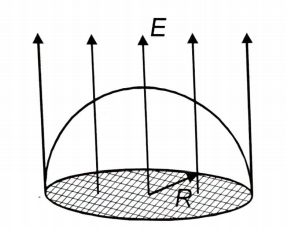The force of interaction between two co-axial short electric dipoles whose centres are R distance apart varies as:
1.
2.
3.
4.
Two charges of coulomb and coulomb are placed 6m apart. Find the electric field intensity ratio at points 4 m from the centre of the electric dipole (i) on the axial line (ii) on the equatorial line
1.
2.
3.
4.
The electric force on a point charge situated on the axis of a short dipole is F. If the charge is shifted along the axis to double the distance, the electric force acting will be:
1. 4F
2.
3.
4.
An electric dipole is placed at an angle with an electric field of strength N/C. It experiences a torque equal to Nm. Calculate the charge on the dipole, if the dipole is of length 4 cm.
1.
2.
3.
4.
A charge q is situated at the centre of a cube. The electric flux through one of the faces of the cube is:
1.
2.
3.
4. Zero
A charge Q is placed at the centre of the open end of a cylindrical vessel. The electric flux through the surface of the vessel is:
1.
2.
3.
4. Zero
A hemispherical surface of radius R is kept in a uniform electric field E as shown in the figure. The flux through the curved surface is:

1.
2.
3.
4. Zero
Total electric flux associated with a unit positive charge in a vacuum is:
1.
2.
3.
4.
A charged body has an electric flux F associated with it. Now if the body is placed inside a conducting shell, then the electric flux outside the shell is:
1. Zero
2. Greater than F
3. Less than F
4. Equal to F
A cylinder of radius R and length L is placed in a uniform electric field E parallel to the cylinder axis. The outward flux over the surface of the cylinder is given by:
1.
2.
3.
4.






